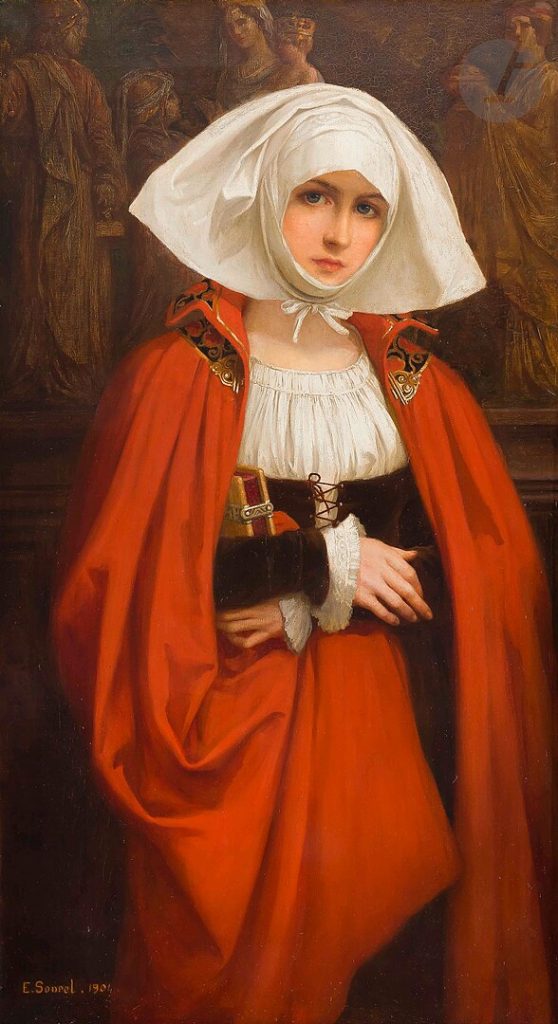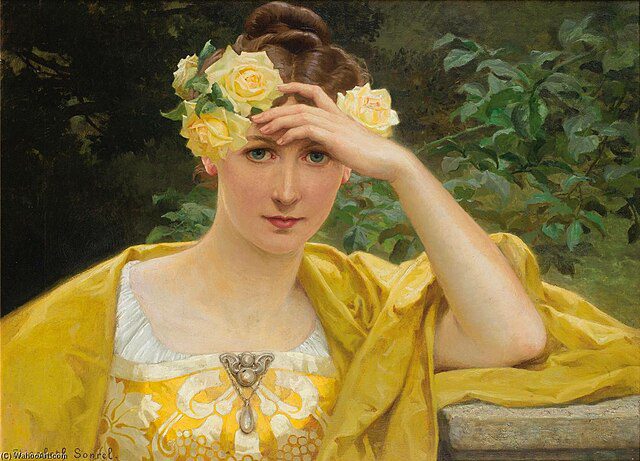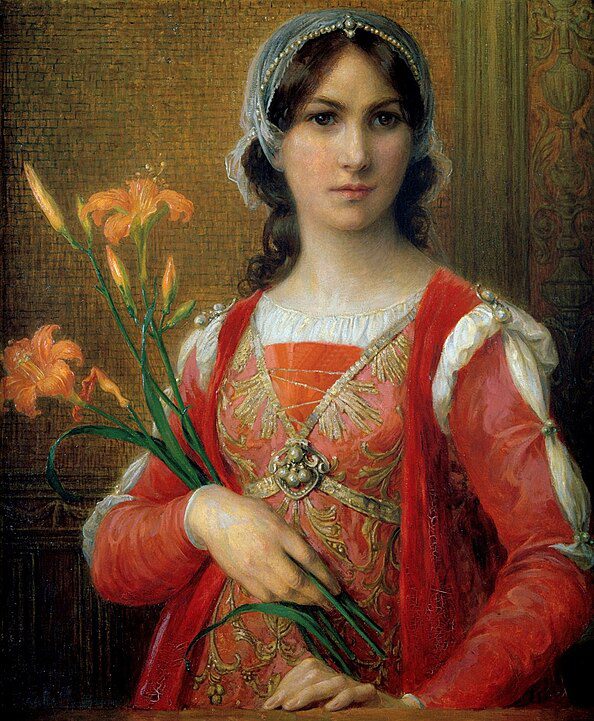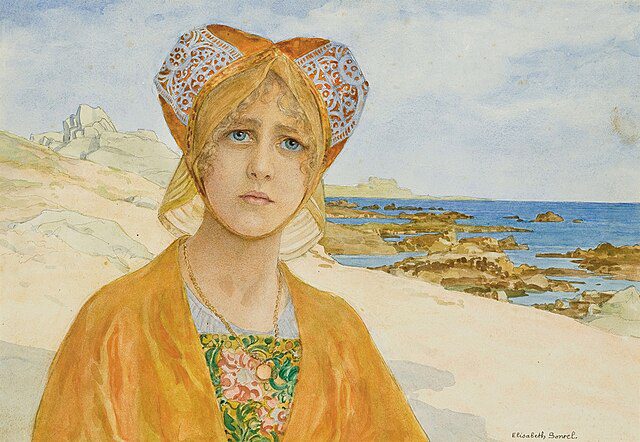
Elisabeth Sonrel (1874-1953) was a French painter and illustrator, notable for her contributions to the Symbolist and Art Nouveau movements. Her work is characterized by its ethereal beauty, intricate detail, and often, the portrayal of mystical and religious themes. Sonrel’s art reflects the broader interests of the fin-de-siècle period in spirituality, the natural world, and the role of women in society, making her an important if somewhat overlooked figure in the history of art.
Born in Tours, France, to a family with artistic leanings—her father was a photographer—Sonrel showed early promise in the arts. She pursued her education at the École des Beaux-Arts in Paris, one of the few women to do so at the time. Under the tutelage of Jules Lefebvre and Tony Robert-Fleury, Sonrel honed her skills and developed a distinctive style that blended classical training with the emerging trends of Symbolism and Art Nouveau.

Sonrel’s paintings often feature strong, idealized women set against lush, natural backdrops or in scenes charged with spiritual or mythical significance. Her use of color is both subtle and vibrant, creating dreamlike atmospheres that draw the viewer into a world of beauty and symbolism. She was inspired by the Pre-Raphaelite Brotherhood and the works of Symbolist painters, which is evident in her attention to detail, use of allegory, and themes of nature and femininity.
A successful Artist
Despite the challenges faced by women in the art world at the turn of the century, Sonrel achieved considerable success during her lifetime. She exhibited regularly at the Salon des Artistes Français, receiving several awards and honors for her work. Her paintings were sought after by collectors and the public alike, and she was commissioned to create illustrations for books and periodicals, contributing to the popularization of the Art Nouveau style in graphic art.

Sonrel’s travels, particularly to Italy and North Africa, influenced her palette and subject matter, introducing warmer tones and exotic motifs into her work. These experiences expanded her artistic repertoire and deepened her exploration of religious and mythological themes, infusing her later works with a sense of mysticism and transcendence.
In addition to her paintings and illustrations, Sonrel’s legacy includes her influence on the role of women in the arts. She was part of a generation of female artists who challenged traditional gender roles and paved the way for future generations to pursue careers in the arts. Her success demonstrated that women could achieve professional recognition and contribute meaningfully to the cultural and aesthetic debates of their time.
Reevaluating Contributions
After her death in 1953, Elisabeth Sonrel’s work fell into relative obscurity, overshadowed by her male contemporaries and the changing tastes of the art world. However, recent interest in female artists and the Symbolist and Art Nouveau movements has led to a reevaluation of her contributions. Today, Sonrel is recognized for her mastery of technique, her unique blend of symbolism and naturalism, and her role in the evolution of early 20th-century art.

Elisabeth Sonrel’s art continues to captivate audiences with its beauty, intricacy, and depth. Her paintings are not only visually stunning but also rich in symbolism and meaning, reflecting the complex cultural currents of her time. As an artist who navigated the challenges of her era with skill and grace, Sonrel’s work and legacy remain an important part of the history of French art.




